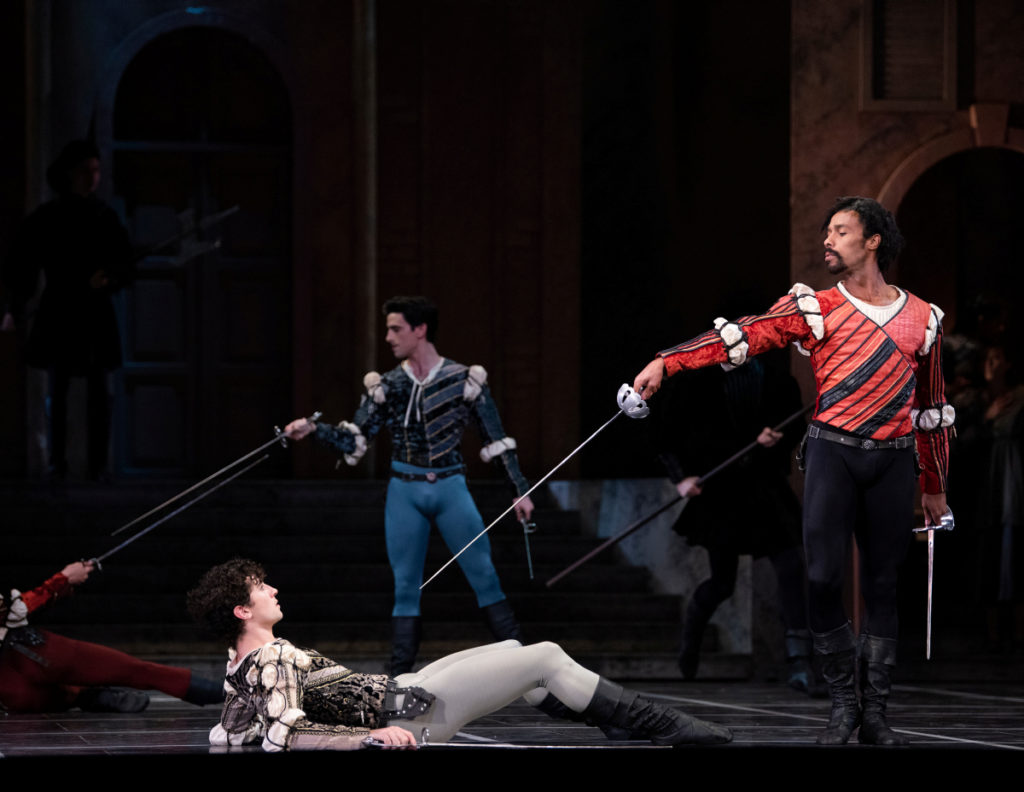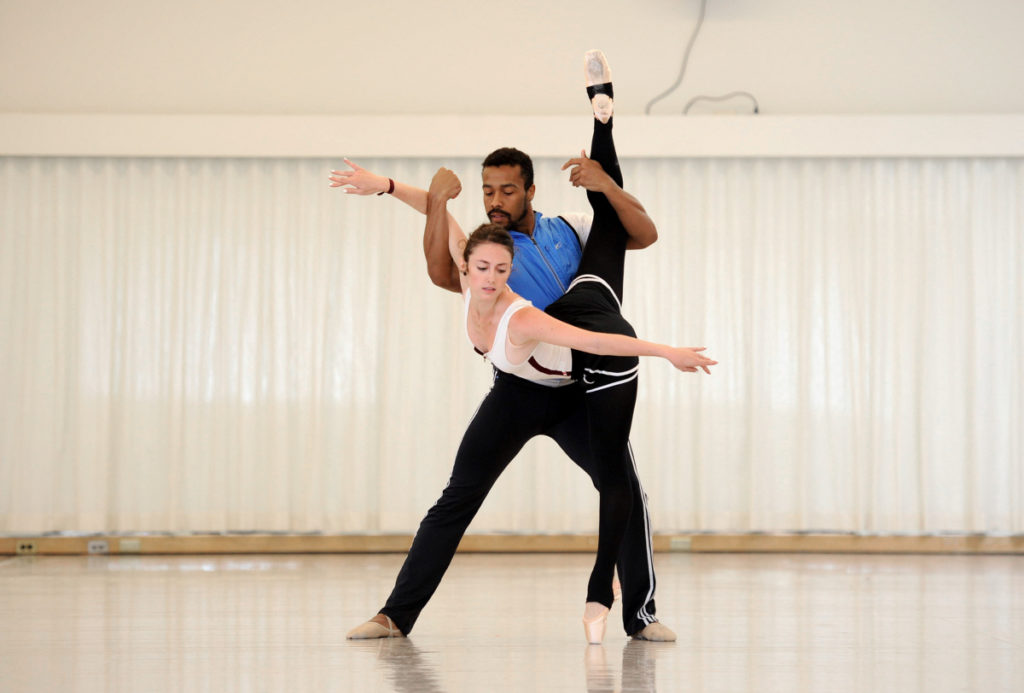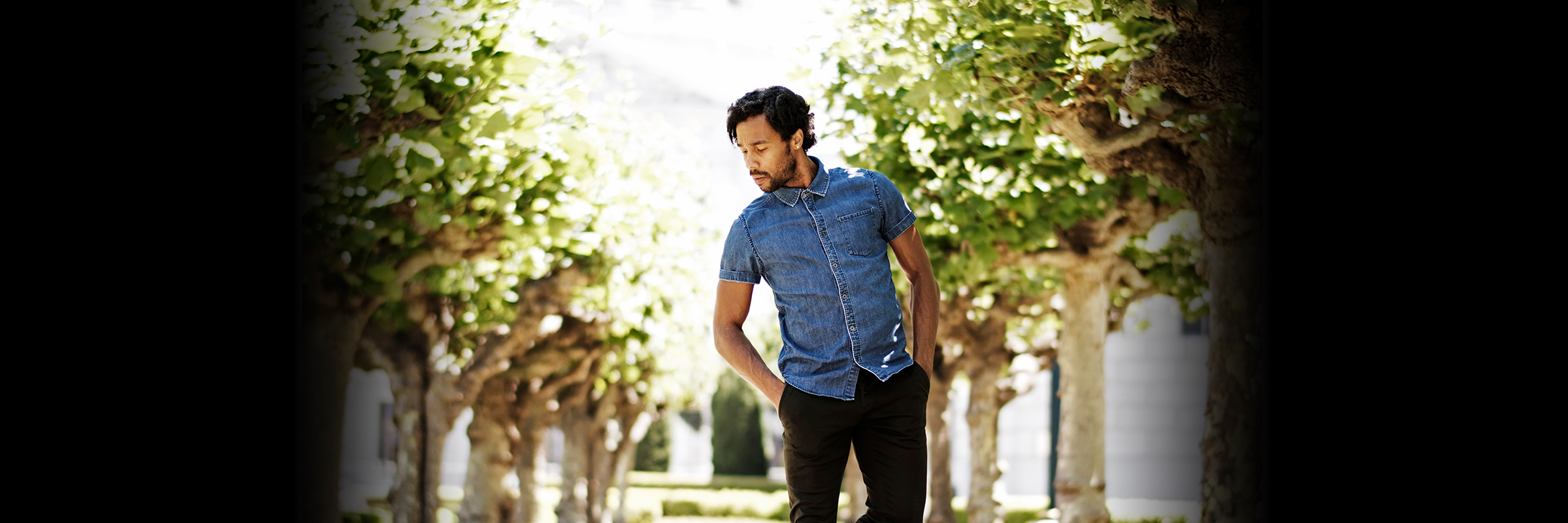Crossroads: Meet Dancer Daniel Deivison-Oliveira
“Playing the bad guy is always fun”
A native of Rio de Janeiro, Daniel Deivison-Oliveira studied at SF Ballet School before joining the Company as a member of the corps de ballet in 2005. He was promoted to soloist in 2011. Daniel has created roles in Benjamin Millepied’s The Chairman Dances—Quartet for Two and Arthur Pita’s Björk Ballet. Outside of dance, he is passionate about his family, loves to read, and is addicted to chocolate.
How did you find dance, or how did it find you?
I was born in Rio de Janeiro in Brazil. I grew up in a family of five, with my mom, dad, and two sisters—one younger and one older. It’s kind of a cliché that in Brazil the boys play soccer and the girls do ballet. So often after soccer practice I would sit around doing homework until I got bored, at which point I would start wandering around the ballet school where my sisters were. One day the teacher asked me to come into the studio and asked if I wanted to try. I said “Okay,” and that happened a couple more times until one day the teacher asked why I didn’t show up in proper dancewear. I suppose that was when it became official that I would study dance.
Was your interest in ballet from the start, or other forms of dance?
It was ballet from the beginning. I think I was around 8. At first I was taking ballet a couple of times a week and still going to soccer practice. Soon I had to choose which one I wanted to do. I chose ballet, even though I had a huge passion for soccer. I could have potentially gone into astronomy, geography, or history, but ballet just felt like my calling. I knew I was meant to be in the arts. It’s a satisfying feeling because now I’m doing what I want and chose to do.
What was it like to train in Brazil?
Once things got more serious, around the time I was 14, it became very different from what I thought ballet would be. I had great teachers who really pushed me to reach my highest limit and trained me to do absolutely everything, from tricky variations to contemporary technique. I would rehearse until 1 am at times, compete in different places every weekend, and dance on terrible stages—even on cement—and in environments that were too cold or too hot. Some of the places I danced growing up would be unthinkable for dancers here; they would never do it. But even when things became so demanding, I had no doubt that this was what I wanted to do.
What have been some of your favorite pieces to perform here at SF Ballet?
I like roles that involve acting and have high technical demands. Playing the bad guy is always fun, like Tybalt from Romeo & Juliet and Von Rothbart in Swan Lake. It doesn’t matter if he wins or loses in the end—if I am able to bring my own interpretation and portray the character, it’s a very special experience for me.
Other pieces I really like performing are RAkU, Classical Symphony, and Diving into the Lilacs by Yuri Possokhov. Roles with high technical demands are really satisfying once you figure out how to pull it off. I’m also really into Val Caniparoli’s and William Forsythe’s works.

How do you change your frame of mind when dancing something neoclassical like Balanchine versus something more contemporary?
Well the technique is different, and the style and what the choreographer wants is different. Depending on the ballet and the intensity of the piece, contemporary works tend to be more forgiving. In classical ballet there is no room to hide, because it is precise. Each mistake is obvious because of how clean it has to be.
What is your favorite dance step?
Quite honestly nowadays I don’t have a favorite, but when I was younger and competing I loved all the tricks—you know, double revoltad, or sissonne entournant or 540, as they call it here in America. Anything that involved impressive jumping and turning.
How does dancing impact you mentally and spiritually?
I think participating in any art discipline is a way to educate and expand yourself physically and mentally, to go into new territories.
What do you do to stay in top form—both in mind and body?
I go to the gym to stay in shape, and I also like to swim and bike. I also eat a well-balanced meal every day. I do have a huge addiction and passion for chocolate and have a hard time not eating it—a lot of it!

Do you think dance plays a role in encouraging critical conversations?
I think it can, certainly. Although, oftentimes I feel like we only talk about specific things in order to fit in or have a commercial appeal. It can sometimes be hard to find something that is being addressed in a genuine way that truly aims to help and change us for the better. I tend to think that if there is something that we believe strongly in, we should do it without the need to give it so much exposure. The moments that feel authentic are precious.
Tell us about the things that you are passionate about.
My family. Every day for the past 16 years I’ve been here I’ve spoken to my family back in Brazil on the phone. I still remember that when I first got here, I would walk six blocks each day to use the public telephone with a phone card to call them for 15 minutes. Later I found out that I could use the same card on the house phone [laughs]—that was a game changer.
Your family played a pivotal role in supporting you as you pursued your passion for dance.
Yes, in the ’90s ballet was considered something for girls. Just like I was bullied at school for wanting to wear a specific earring that was trendy at the time, I was also bullied for wanting to be a ballet dancer. My dad, who was in the military at the time, took dance classes with me to boost my courage and confidence, and even bought two earrings—one for me and one for him—to wear together. Because of my family, even though it was hard to be bullied, it was never enough to stop me from dancing.
If you could invite one or two choreographers to your dinner party, who would it be and why?
Yuri Zhukov and Val Caniparoli. They’re fun and funny. We have a great time together because we each have dry senses of humor.
Header Image: Daniel Deivison-Oliveira // © Erik Tomasson








